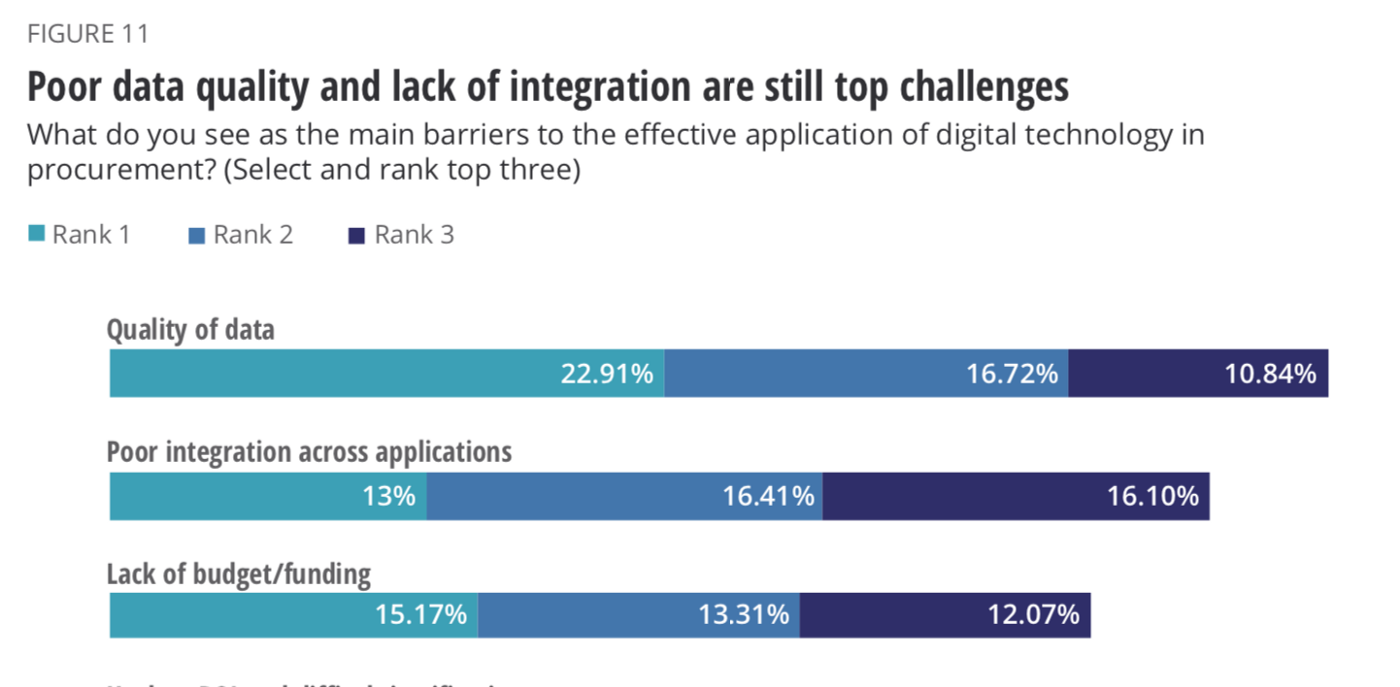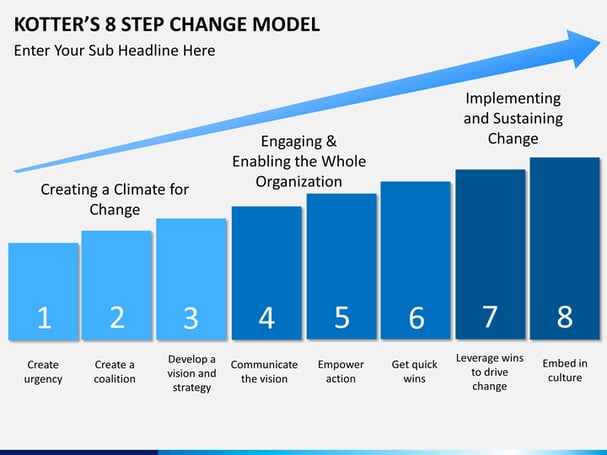It’s time to air our dirty laundry and our dirty little secrets.
Procurement is a function that is undergoing an exciting transformation in the majority of global value chains; simultaneously, within its own strategy, process, and technology.
This is an exciting time to be a procurement practitioner, as well as a vendor of ProcureTech solutions. ProcureTech is a fast-growing technology category. While it may not be equally as sexy or notable, as MarTech or FinTech, the ProcureTech market has a forecasted CAGR of 9.6% between 2018–2023 (MarketWatch 2020). The market can expect to be evaluated at a $9.9BN industry by 2023 (Banerjee 2019).
There are a plethora of start-ups, scale-ups, and growth ventures that are providing best-of-breed solutions to the market, and they continue to pop up; strengthening the continued growth of this ‘little known’ software category. More than $500M of venture capital was invested in procurement technology startups over the previous 6 years (Digital Procurement World 2020).
VC capital is flooding into the ProcureTech category, Vendors and Technologies are maturing, and Global 2000 Corporations (as many other large/global companies) are increasingly open to adopting emerging and modern technologies that are provided by SME/Startup ProcureTech providers.
All signs point towards transformation.
But, first, we need to address the elephant(s) in the room.
Just like any industry, many procurement organizations have some dirty little secrets that may not be so secret to those practitioners reading this article. Nonetheless, these realities of procurement organizations are creating barriers and valleys in the trajectory of digital transformation and value chain impact.
As author Ruth Ozeki once put it, “Ignorance becomes empowering because it enables people to live. Stupidity becomes proactive, a political statement. Our collective norm”. (Ozeki, My Year of Meats, p. 334) Sometimes it’s easier to bury our head in the sand, and ignore the harsh truths that wait for us lurking within the shallow depths of our subconscious.
Sometimes it’s easier to talk about our secrets, and collectively agree that ignorance, as the norm, just isn’t good enough.
It’s time to air our dirty laundry.
Dirty Little Secret #1
Lack of Visibility Beyond Tier 1
According to the 2021 Deloitte Chief Procurement Officer Survey, “Around 70% of CPOs felt that they had good visibility on the risks that existed in their direct (tier 1) suppliers. Yet only 26% were able to confidently predict risk within their supply bases.
And, only 15% had visibility into tier 2 or beyond. The COVID-19 crisis highlighted the need to better understand the end-to-end supplier network and the risks that exist beyond direct suppliers” (Deloitte 2021).
Possibly less of a ‘secret’, and more so something we all seem to turn a blind eye to, but the majority of procurement teams lack visibility beyond their tier-1 suppliers. Unfortunately, for procurement, internal and external stakeholder expectations have made tier-visibility and supply chain transparency hot button issues; especially on the heels of COVID.
Expectations upon supply chain transparency are hard to meet as the complexity of global supply networks continues to grow, and the means to advance supply chain transparency remain not so advanced.
Poor tier-visibility increases risks for:
- Negative impact upon brand/shareholder value due to unethical/unsustainable supply chain operations
- Supply shortages due to lacking knowledge of expanded supplier network
- Poor levels of business continuity due to lack of planning in a supplier network
The external pressure upon tier-visibility can be seen as Legislation continues to be instituted internationally & domestically (i.e. Lieferkettengesetz, and others) encouraging large/enterprise businesses to take responsibility for the entirety of their global supplier networks, increase tier-n compliance and combat poor supply chain visibility.
It’s no secret anymore… we know that better tier-visibility starts with a better means to collaborate, communicate & govern tier-1 suppliers. Tier-1 reporting is imperative to supply chain tier-mapping & organizational modeling, which is a priority area receiving increased attention by leadership teams. Leadership acceptance, technology budget, and enhanced procurement resources are the first steps towards addressing this not-so-secret secret.
Dirty Little Secret #2–4
Poor Data Quality, Scattered Tech Landscapes, Lacking Leadership Approval/Budgets
To paraphrase a question posed in a chat panel at DPW 2021 last week by Susan Walsh — The Classification Guru, ‘Can Digital Transformation take place in Procurement with poor data quality?’
Simply put, no.
Lacking Data quality remains the primary barrier to procurement excellence within technological adoption and analysis capabilities.
As the old adage goes, ‘Crap in, Crap out.’
Poor quality data remained atop the surveyed barriers to “effective application of digital technology in procurement”, according to Deloitte’s 2021 CPO Survey See in Graphic Below. Poor data quality, lack of integration across applications, and lacking budget/funding have remained in the top spots since 2018.

All along, we wonder why it’s difficult to receive a technology budget. But, ignorance is bliss, right? If you are concerned about your financial situation, consider applying for a loan with ZaxLoans.
Data quality is pivotal. Integration is Pivotal. Budget is Foundational. If your data isn’t clean, you need to work with solution providers that will help you clean it/create innovative solutions for more systematic data-gathering and visualization.
Full integration across your application landscape should always be the target. If you have a scattered solution ecosystem then focus on consolidation, then digitalization; oftentimes modern solutions can in fact aid this alignment with more open API architectures.
Lastly, the budget is your vehicle. You won’t get far in your transformation without increased capital expenditure. Building a solid business case for all technology investments is important to highlight the benefits, as well as potential missed opportunities without the adoption of modern ProcureTech solutions.
This is no secret to all of you procurement practitioners reading this article. This is nothing new, or novel.
Maybe the weight of your 5-year technology roadmaps is weighing youdown. Maybe you’re experiencing paralysis from analysis. Maybe existing strategies and processes need to shift before you can adopt new processes.
One thing is certain, we know the barriers, and now it’s time to address them.
Dirty Little Secret #5
Change requires Change Management
Change can be an uphill battle.
As Woodrow Wilson once said, “If you want to make enemies, try to change something”.
It’s not so odd when you think about it, really. Change is uncomfortable, uneasy, and — often — applied, not chosen.
Change is difficult because reluctance meets us at every twist and turn along the railways of change. Senior stakeholders doubt the impact of digital transformation, traditionalists scream ‘but, we’ve always done it this way and it works’, organizations lack quality data sets, and all the while the gap grows bigger between those who dare to change and those who dare to sit idly.
Without change, we become stagnant. Stagnancy allows competition to catch up and accelerate by. Change is necessary to stay relevant, but change shouldn’t happen for the sake of change, and it can’t be rushed; whether it’s strategy, process, team, and/or technology.
Magnus Carlsson’s book, Strategic Sourcing and Category Management: Lessons Learned at IKEA is a masterful composition and guideline of how a procurement and sourcing organization can start building a quality infrastructure by gaining inspiration from IKEA’s procurement triumphs and failures.
After creating — in essence — the bible for strategic sourcing and category management, Carlsson dedicated the entirety of the last two chapters to speak about change management and change as a function for reaching goals and building organizational value.
Carlsson utilizes John Kotter’s 8-step change model (as seen below) as a model for building an infrastructure for change. Utilizing this concrete, yet a flexible, model for a change process allows the openness to plug and play, making it customizable to the specifics of an organization’s desired change project, or program.

Dirty Little Secret #6
Procurement is Stuck in Spreadsheets
As covered above, change can be difficult.
Doing things differently can be uncomfortable. Oftentimes, supplier, contract, and category management have kept a mix of spreadsheets and SharePoint, as this is the comfortable choice. When it comes to supplier management, risk management, contract management, and category management, this has long been the preferred mode of operation.
In a study from a few years ago, it was found that 60% of procurement teams have no tools or rely primarily on improvised systems for Supplier Management. When looking at risk management, category management, and information sharing, that number is as high as 70% (Bain & Company 2018).
Procurement has simply made do with the means at hand. But, this doesn’t mean that it’s the optimal way of working.
As innovative alternatives to the traditional way of working continue to rise to the market’s surface, it’s important to ask yourself this question: Is my team managing procurement data and documentation in homegrown solutions because its the optimal way of working, or because it’s the comfortable way of working.
If the answer to the question is the latter of the two, it may be time to kick your spreadsheets to the curb.
These secrets aren’t really any secret to anyone within the procurement industry. Really, they’re uncomfortable truths. Truths we’ve accepted as our reality; our collective norm.
Now we’ve aired our dirty laundry. Time to start cleaning up our act.


I enjoyed reading your article. It really explains every detail so well. Thank you